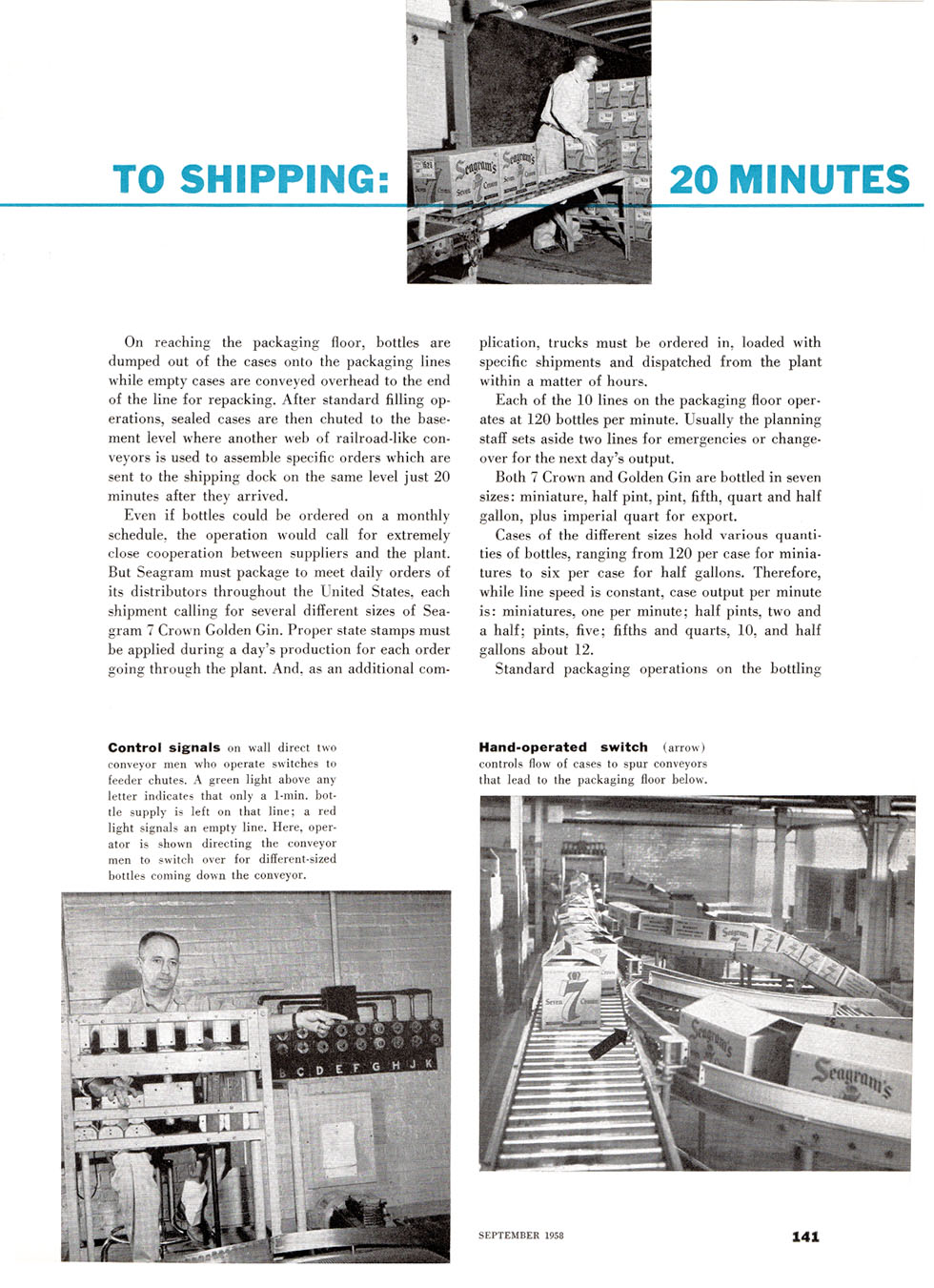


On reaching the packaging floor, bottles are dumped out of the cases onto the packaging lines while empty cases are conveyed overhead to the end of the line for repacking. After standard filling operations, sealed cases are then chuted to the basement level where another web of railroad-like conveyors is used to assemble specific orders which are sent to the shipping dock on the same level just 20 minutes after they arrived.
Even if bottles could be ordered on a monthly schedule, the operation would call for extremely close cooperation between suppliers and the plant. But Seagram must package to meet daily orders of its distributors throughout the United States, each shipment calling for several different sizes of Seagram 7 Crown Golden Gin. Proper state stamps must be applied during a day's production for each order going through the plant. And, as an additional com
Control signals on wall direct two conveyor men who operate switches to feeder chutes. A green light above any letter indicates that only a 1-min. bottle supply is left on that line; a red light signals an empty line. Here, operator is shown directing the conveyor men to switch over for different-sized bottles coming down the conveyor.
plication, trucks must be ordered in, loaded with specific shipments and dispatched from the plant within a matter of hours.
Each of the 10 lines on the packaging floor operates at 120 bottles per minute. Usually the planning staff sets aside two lines for emergencies or changeover for the next day's output.
Both 7 Crown and Golden Gin are bottled in seven sizes: miniature, half pint, pint, fifth, quart and half gallon, plus imperial quart for export.
Cases of the different sizes hold various quantities of bottles, ranging from 120 per case for miniatures to six per case for half gallons. Therefore, while line speed is constant, case output per minute is: miniatures, one per minute; half pints, two and a half; pints, five; fifths and quarts, 10, and half gallons about 12.
Standard packaging operations on the bottling
Hand-operated switch (arrow) controls flow of cases to spur conveyors that lead to the packaging floor below.
r : 7 I?-